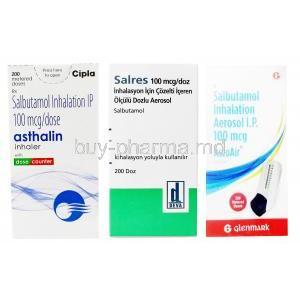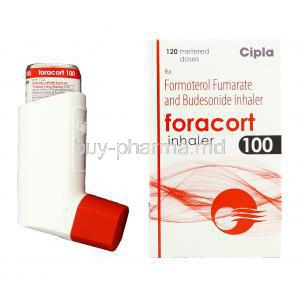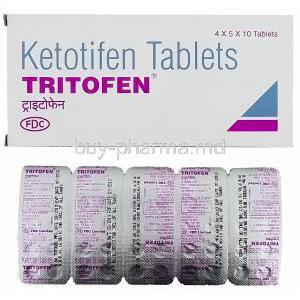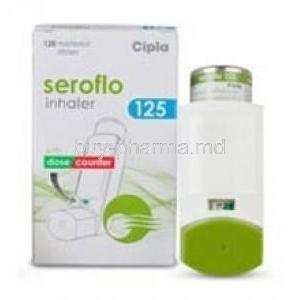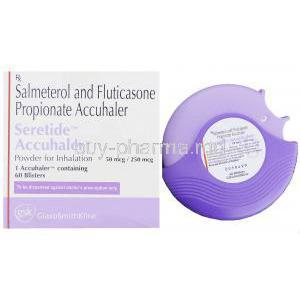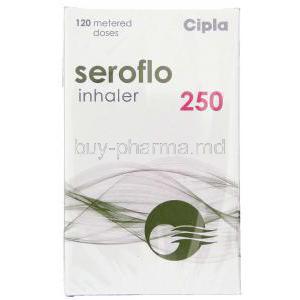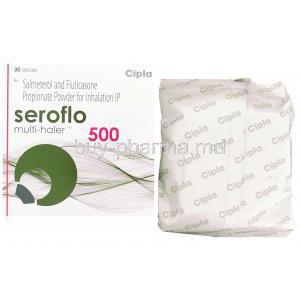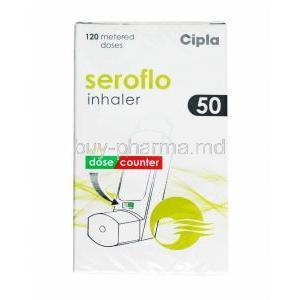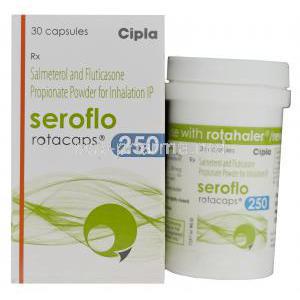Introduction to Onbrez Breezhaler (Indacaterol Inhalation)
Overview of Onbrez Breezhaler
Onbrez Breezhaler is a precision-engineered inhalation therapy designed to manage and control the symptoms of chronic respiratory conditions. Delivered via a dry powder inhaler, this medication ensures targeted action within the lungs, making it ideal for daily maintenance treatment in obstructive pulmonary diseases.
It offers rapid relief from breathlessness while enhancing the overall pulmonary capacity of the patient. Its once-daily dosing improves adherence, particularly in elderly patients managing multiple medications.
Classification: Long-acting beta2-adrenergic agonist (LABA)
Indacaterol, the active molecule in Onbrez Breezhaler, belongs to the pharmacologic class known as long-acting beta2-adrenergic agonists (LABAs). These agents function by stimulating β2-adrenergic receptors in the bronchial smooth muscle, leading to sustained bronchodilation.
Regulatory Status and Approval History
Onbrez Breezhaler received regulatory approval from multiple authorities including the European Medicines Agency (EMA) and the U.S. Food and Drug Administration (FDA) for the maintenance treatment of COPD. It was introduced as a therapeutic option following extensive Phase III clinical trials demonstrating efficacy and tolerability.
Available Strengths and Packaging Formats
Onbrez is typically available in the following capsule strengths:
- 150 mcg
- 300 mcg
Each blister strip contains unit-dose capsules, accompanied by a Breezhaler device designed to facilitate effective pulmonary deposition of the active substance.
Active Ingredient and Composition
Indacaterol Maleate: Pharmacological Profile
Indacaterol maleate is a selective beta2-agonist with a high intrinsic efficacy. It exhibits a rapid onset of action (within 5 minutes) and provides 24-hour bronchodilation with a single daily dose. Its lipophilic nature allows for sustained receptor engagement, differentiating it from short-acting bronchodilators.
List of Excipients and Capsule Formulation
The formulation includes:
- Lactose monohydrate (carrier)
- Gelatin (capsule shell)
- Colorants such as black ink (on capsule imprint)
These inert components ensure uniform powder dispersion and protect the integrity of the active ingredient.
Inhalation Device: Breezhaler Mechanism and Components
The Breezhaler device is a passive inhaler that operates via the patient’s inspiratory effort. Upon capsule perforation, the powder is aerosolized, enabling deep-lung delivery. Its transparent chamber allows visual confirmation of dose intake, enhancing user confidence and adherence.
Medical Uses and Approved Indications
Chronic Obstructive Pulmonary Disease (COPD): Long-term Maintenance Treatment
Onbrez Breezhaler is indicated for the once-daily maintenance bronchodilator treatment of airflow obstruction in patients with COPD, including chronic bronchitis and emphysema. It reduces dyspnea, exacerbation frequency, and hospitalizations.
Symptomatic Relief of Airflow Obstruction
Regular use leads to improved FEV1 (Forced Expiratory Volume), reduced hyperinflation, and better ventilatory capacity. Patients experience decreased use of rescue inhalers and enhanced control over daily symptoms.
Improvement in Exercise Tolerance in COPD Patients
Clinical trials have demonstrated a marked improvement in 6-minute walk test results. Indacaterol’s bronchodilatory effect reduces dynamic hyperinflation during exertion, enhancing quality of life.
Off-Label and Investigational Uses
Off-Label Use in Asthma (with ICS)
While not approved as monotherapy in asthma, indacaterol is sometimes used off-label in conjunction with inhaled corticosteroids (ICS) for patients with severe asthma unresponsive to standard treatment.
Use in Chronic Bronchitis or Emphysema
In clinical practice, Onbrez is often prescribed to patients with chronic bronchitis or emphysema as part of combination therapy aimed at improving pulmonary function and reducing mucus production.
Evaluation in Treatment of Bronchiectasis
Emerging studies are investigating indacaterol’s role in bronchiectasis, particularly in patients with overlapping COPD phenotypes, where bronchodilation can facilitate mucus clearance.
Potential Role in Pulmonary Rehabilitation Programs
Onbrez is integrated into some rehabilitation protocols to facilitate better respiratory performance during physical conditioning and respiratory physiotherapy.
Mechanism of Action: How Indacaterol Works
Beta2-Adrenergic Receptor Agonism and Bronchodilation
Indacaterol binds to β2-adrenergic receptors on airway smooth muscle, triggering the activation of adenylate cyclase. This increases intracellular cyclic AMP, resulting in muscle relaxation and bronchodilation.
Onset of Action and Duration of Effect
- Onset: within 5 minutes - Peak effect: 1–2 hours - Duration: ≥24 hours
Its ultra-long-acting profile permits once-daily dosing, making it a valuable option for improving compliance.
Pharmacodynamic Effects on Airway Smooth Muscle
The agent exhibits dose-dependent smooth muscle relaxation, reduces airway resistance, and mitigates hyperresponsiveness to stimuli such as allergens or cold air.
Comparison with Other LABAs
Unlike salmeterol or formoterol, indacaterol provides sustained bronchodilation with a single dose. Its high affinity and lipophilicity distinguish it within the LABA class.
Dosage and Administration Guidelines
Recommended Dosage for Adults with COPD
The standard dosage is:
- 150 mcg once daily, via oral inhalation
- May be increased to 300 mcg in patients with severe symptoms
Inhalation Technique and Device Use Instructions
- Insert capsule into Breezhaler - Press buttons to pierce the capsule - Inhale deeply and hold breath for 5–10 seconds - Do not swallow the capsule
Missed Dose Protocol
If a dose is missed, it should be taken as soon as remembered. If it is close to the time of the next dose, skip the missed dose. Do not double the dose.
Frequency and Timing of Administration
Administer once daily at the same time each day, preferably in the morning to maintain consistent plasma levels and optimize daytime respiratory function.
Special Dosage Considerations
Dosage Adjustment in Renal Impairment
No dosage adjustment is typically necessary. However, in patients with severe renal dysfunction, caution is advised due to limited pharmacokinetic data.
Dosage Guidance for Hepatic Impairment
Mild to moderate hepatic impairment does not require dosage alteration. Severe hepatic dysfunction has not been adequately studied; use only if clearly indicated.
Transitioning from Other Bronchodilators
Patients switching from another LABA or LAMA should discontinue prior bronchodilator therapy before initiating indacaterol. Overlap therapy may increase side effect risk.
Common and Serious Side Effects
Common Side Effects
Cough After Inhalation
Transient cough immediately following inhalation is common and generally self-limiting.
Headache, Nasopharyngitis, and Muscle Cramps
These effects are usually mild and do not necessitate treatment discontinuation. Adequate hydration and symptomatic care are recommended.
Upper Respiratory Tract Infections
Patients may experience mild infections such as rhinitis or sinusitis. Monitor for progression in immunocompromised individuals.
Serious Adverse Reactions
Paradoxical Bronchospasm
Although rare, this condition can be life-threatening. Discontinue treatment immediately if it occurs.
Hypokalemia and Hyperglycemia
Beta2-agonists may lower serum potassium or elevate blood glucose, especially in susceptible patients (e.g., diabetics, diuretic users).
Cardiac Arrhythmias and QT Prolongation
Tachycardia and palpitations have been reported. ECG monitoring is recommended in patients with cardiac history.
Hypersensitivity Reactions
Anaphylactic responses are rare but documented. Symptoms include rash, angioedema, and dyspnea.
Drug Interactions and Contraindications
Drug Interactions
Interactions with Beta-Blockers
Concomitant use may reduce the efficacy of indacaterol and provoke bronchospasm. Prefer cardioselective agents if unavoidable.
Risk with Other Adrenergic Agents
Additive cardiovascular effects may occur, including increased heart rate and blood pressure.
Use with Monoamine Oxidase Inhibitors or Tricyclic Antidepressants
These agents may potentiate the action of beta2-agonists and elevate the risk of adverse cardiovascular outcomes.
Caution with Diuretics, Corticosteroids, and Xanthines
Increased susceptibility to hypokalemia. Monitor electrolytes and adjust therapy as needed.
Contraindications
Hypersensitivity to Indacaterol or Capsule Excipients
Absolute contraindication. Confirm allergen history prior to initiation.
Use in Patients with Unstable Cardiovascular Conditions
Avoid in individuals with uncontrolled arrhythmias, recent myocardial infarction, or severe hypertension.
Warnings and Important Precautions
Not for Treatment of Acute Bronchospasm
Onbrez is not a rescue inhaler. It must not be used for rapid relief of acute breathing difficulties. Short-acting beta2-agonists (e.g., salbutamol) should be prescribed separately.
Risks of Cardiovascular Stimulation
Monitor patients with pre-existing cardiovascular disease for symptoms such as chest pain, tachyarrhythmias, or hypertension.
Use with Caution in Patients with Convulsive Disorders or Thyrotoxicosis
Stimulation of β2 receptors may exacerbate neurological or endocrine instability. Careful monitoring and dose titration are advised.
Risk of Worsening Asthma if Used Without ICS
In asthma patients, LABAs must be co-administered with an inhaled corticosteroid to mitigate the risk of fatal exacerbations.
Careful Administration and Patient Monitoring
Regular Lung Function Assessment
Ongoing evaluation of pulmonary performance is imperative when using Onbrez Breezhaler. Routine spirometry, particularly Forced Expiratory Volume in one second (FEV1), offers quantifiable insight into therapeutic efficacy and disease progression. Regular assessments can help detect suboptimal responses early and prevent exacerbations.
- Perform baseline and periodic spirometric evaluations - Compare FEV1 trends across visits - Investigate any unexplained decline in peak flow
Monitoring of Serum Potassium and Blood Glucose
Indacaterol, as a β2-agonist, may provoke transient shifts in serum potassium and glucose levels. Although generally well tolerated, certain populations—such as those with diabetes mellitus or receiving diuretics—require vigilance.
- Check serum potassium periodically in patients on loop or thiazide diuretics
- Monitor blood glucose in diabetic patients or those with metabolic disorders
Assessment for Paradoxical Bronchospasm or Allergic Reactions
Patients must be monitored for paradoxical bronchospasm, a rare but serious adverse event. It manifests as acute airway constriction shortly after inhalation. Hypersensitivity reactions such as rash, urticaria, or oropharyngeal edema must also be promptly addressed.
Immediate discontinuation is warranted if such events occur.
Use in Special Populations
Administration in Elderly Patients
Efficacy and Safety Profile in Patients Aged 65 and Older
Clinical data indicate that Onbrez Breezhaler maintains robust efficacy in geriatric cohorts. Lung function improvements and symptom relief are consistent across age brackets, including those ≥75 years.
No Routine Dose Adjustment Required
Due to negligible differences in pharmacokinetics, no age-based dose alteration is necessary. Standard dosing applies unless contraindications or comorbidities demand otherwise.
Monitoring Considerations
Older adults often present with polypharmacy and comorbid cardiovascular conditions. Therefore:
- Monitor for cumulative beta-agonist effects
- Assess cognitive function to ensure correct device usage
Use in Pregnant Women and Nursing Mothers
Animal Reproductive Studies and Human Risk Evaluation
Animal studies have shown adverse effects at maternally toxic doses, including skeletal variations and delayed ossification. Human data remain insufficient to establish unequivocal safety.
Category and Precautionary Use During Pregnancy
Onbrez Breezhaler should be used during pregnancy only if the anticipated benefit justifies the potential risk. It is generally categorized under risk class C, emphasizing a precautionary stance.
Transfer into Breast Milk and Lactation Safety
It is unknown whether indacaterol is excreted into human milk. Given the potential for serious adverse reactions in nursing infants, caution is advised, and risk–benefit analysis should guide treatment decisions.
Pediatric Use and Safety Considerations
Lack of Established Safety and Efficacy in Children and Adolescents
Onbrez Breezhaler has not been evaluated adequately in individuals under 18 years of age. The pharmacokinetic profile and long-term safety in pediatric populations remain undetermined.
Age Restrictions in Product Labeling
The medication is contraindicated in children and adolescents. Use in these populations falls outside the approved therapeutic indication and is not recommended under current guidelines.
Overdose Management and Symptoms
Signs and Symptoms of Overdose (Tachycardia, Tremor, Headache)
Excessive activation of β2-adrenergic receptors may result in a constellation of symptoms including:
- Palpitations or supraventricular tachycardia
- Skeletal muscle tremors
- Nervousness or headache
In extreme cases, hypokalemia or prolonged QT interval may be observed.
Recommended Emergency Measures and Supportive Care
Treatment of overdose is symptomatic and supportive. Options include:
- Cardiac monitoring and ECG evaluation
- Electrolyte correction (e.g., potassium supplementation)
- Beta-blockers (preferably cardioselective) under close supervision
Toxicity Thresholds and Clinical Monitoring Parameters
There is no specific antidote. Continuous cardiovascular and respiratory monitoring should be initiated, particularly in patients with underlying cardiac disease. Serial serum potassium measurements may be required.
Storage and Stability Information
Ideal Storage Temperature and Humidity Conditions
- Store below 25°C (77°F) - Avoid excessive humidity and direct sunlight - Keep capsules in original blister until use to prevent moisture degradation
Shelf Life and Expiration Guidance
The typical shelf life is 18–24 months from manufacture. Expired capsules should not be used, as potency and dispersion may be compromised.
Handling of Opened Capsules and Inhalers
- Use capsule immediately after removing from blister - Do not store used or partially used capsules - Clean inhaler mouthpiece weekly with a dry cloth
Handling and Disposal Precautions
Proper Insertion and Disposal of Capsules
Capsules should be inserted into the Breezhaler only immediately prior to use. After inhalation:
- Discard used capsule in household waste
- Do not reuse capsules under any circumstances
Cleaning and Maintenance of the Breezhaler Device
To ensure consistent delivery:
- Clean mouthpiece weekly with a dry, lint-free cloth
- Avoid water exposure to internal components
- Replace device every 30 days or per manufacturer's recommendation
Safety Measures to Avoid Accidental Exposure
Keep capsules out of reach of children. Do not swallow capsules. Ensure proper training for caregivers if assisting with administration.
Patient Counseling and Usage Education
Instruction on Inhaler Technique and Capsule Use
Effective use of Onbrez Breezhaler depends on correct technique:
- Remove capsule from blister immediately before use
- Place capsule in chamber and pierce using side buttons
- Inhale forcefully and deeply through mouthpiece
- Hold breath for 5–10 seconds, then exhale slowly
Reinforcing Importance of Adherence to Prescribed Schedule
Adherence to once-daily dosing is essential for consistent bronchodilation. Educate patients on:
- Taking the dose at the same time daily
- Not skipping or doubling doses
- Contacting a healthcare provider if symptoms worsen
Recognizing and Reporting Adverse Effects or Inefficacy
Patients should be instructed to monitor for side effects and seek medical advice if they experience:
- Persistent cough, chest tightness, or wheezing
- Palpitations, tremors, or dizziness
- Signs of allergic reaction (rash, swelling, or difficulty breathing)
Early identification and intervention are crucial in ensuring safe and effective use.


